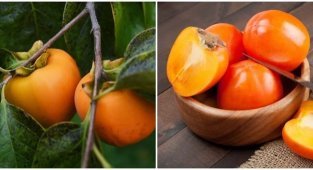The Japanese eat "kaki" - it means autumn has come (24 photos)
This fruit is the pride of Japan; it has been loved and revered by the Japanese since ancient times. For them, the taste of kaki is the taste of Japanese autumn. 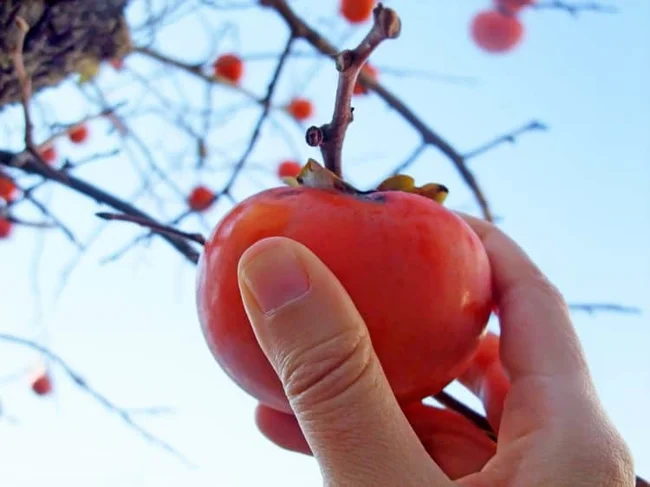
Kaki (柿) is Japanese for persimmon.
When I first came to Japan, I was surprised not only by this funny name, but also by the Japanese persimmon itself - it is very different from ours. Japanese kaki fruits are very sweet, not at all tart, generally very dense and strong. 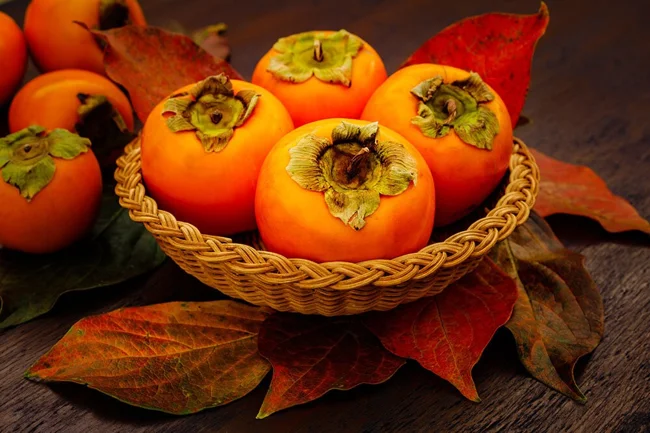
Each region of the country has its own special variety, and there are said to be around 1,000 of them.
As soon as October comes, on the streets and gardens you can see persimmon trees hung with bright orange fruits; against the background of the blue sky it looks very beautiful. 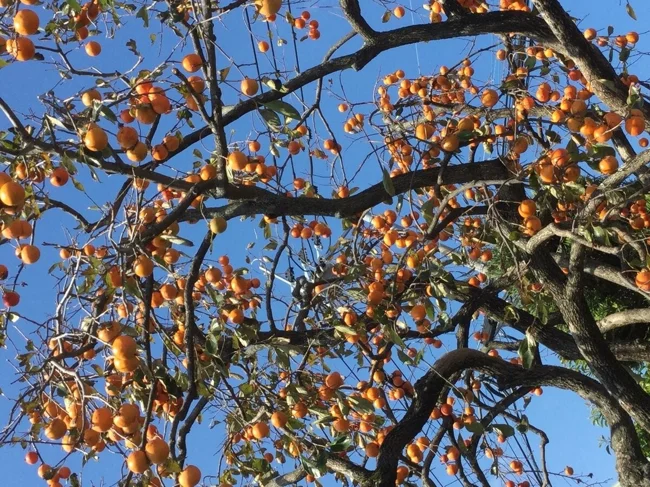
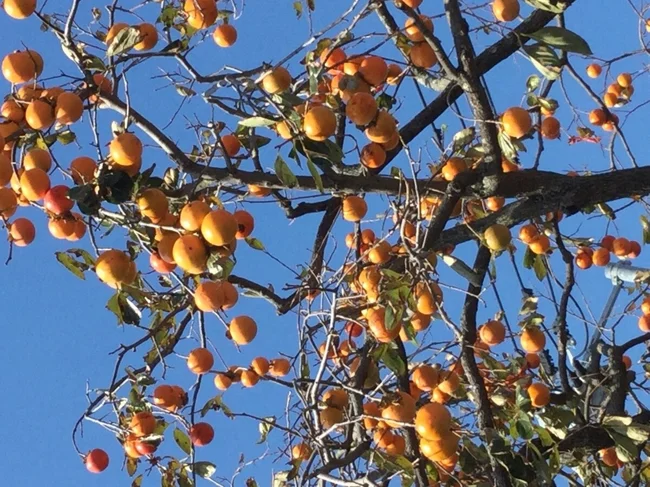
Fukuoka
In Japan, kaki can be said to grow everywhere!
It is believed that growing persimmons is quite easy when compared to other fruit trees, which is why kakis grow in every garden and along roads. 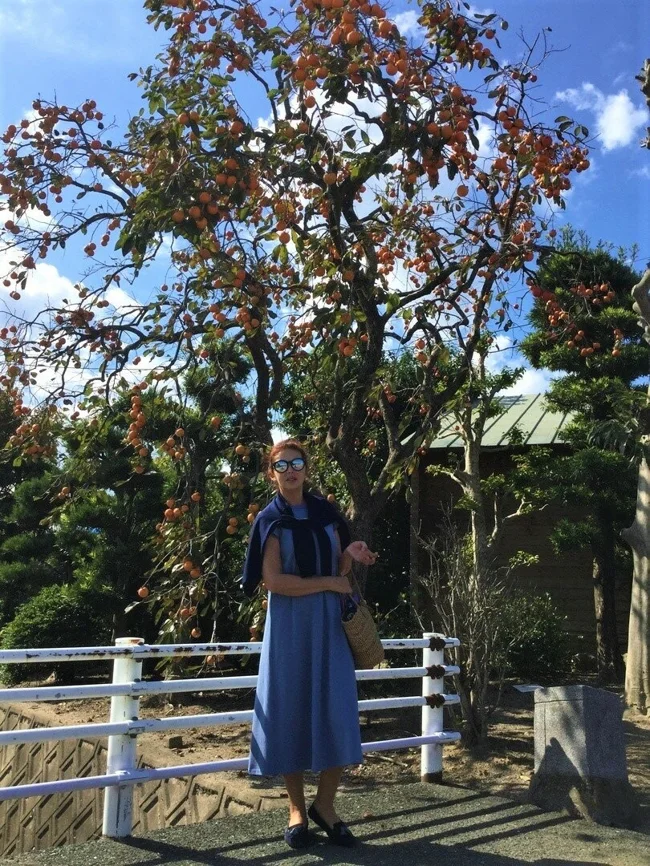
There are many theories regarding the origin of persimmon, some claim that this fruit comes from China, others are sure that it comes from Japan.
I heard the Japanese people being surprised:
- Persimmon is a fruit of Japan! Why do they write everywhere that the country of origin is China?!
There are reports that during excavations in the city of Mizunami, Gifu Prefecture, archaeologists found persimmon fossils dating back to the Tertiary period.
Seeds of this plant have also been recovered from ruins from the Jomon (13,000 BC to 300 BC) and Yayoi (300 BC to 300 AD) periods.
It has been proven that kaki was widely grown in the Land of the Rising Sun during the Nara period (710-794), but at that time there were no sweet persimmons as there are now, and all varieties were astringent, so they were dried.
Manuscripts from the Heian period (794-1185) describe kaki being used as a confectionery for festivals, and the plant was cultivated in the imperial court.
During the Kamakura period (1185-1333), a variety of sweet persimmon was developed.
Well, in the Edo period (1603-1868) there were already about 200 species of it in Japan. 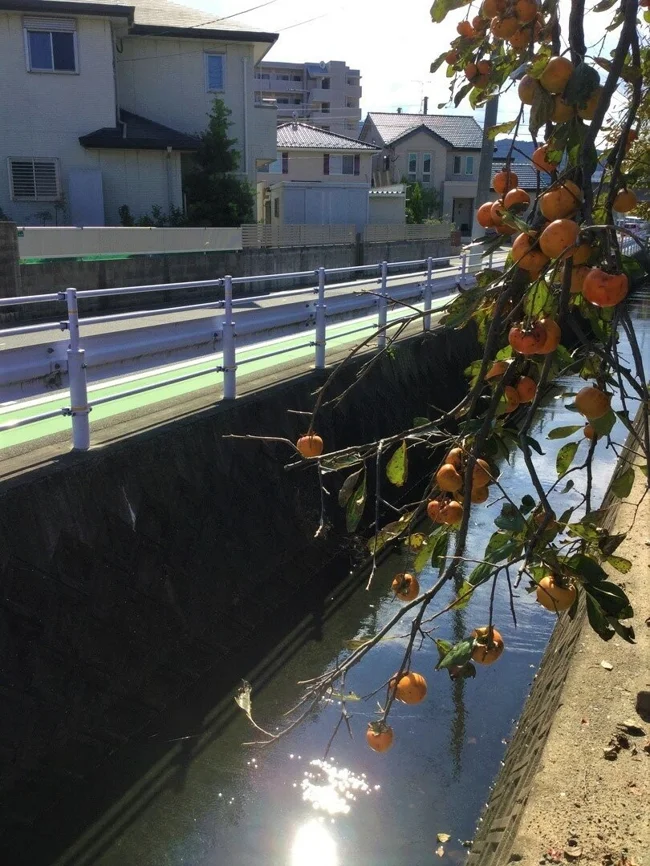
The Japanese say that many fruits came to them from abroad, but persimmon is a plant that came to other countries from Japan.
And the proof of this is its Japanese name “kaki”.
This is what persimmon is called in many countries: in Portugal, Latin America, Italy, Spain, France, the Czech Republic, Germany, and Morocco. In Serbian, Bosnian and Slovenian, persimmon is also "kaki". Please write in the comments, is this true? 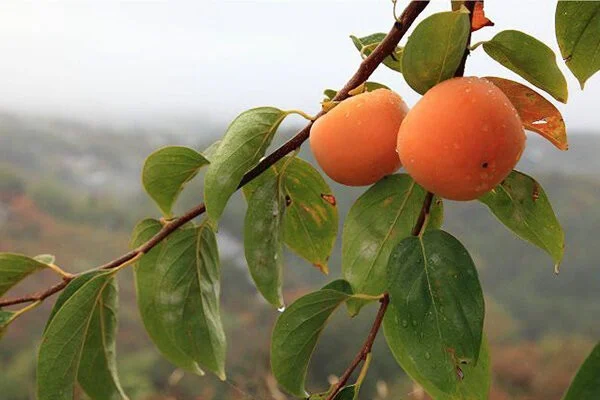
Persimmon
It is believed that in the 16th century, persimmons were brought to Europe by the Portuguese from Japan, and from there they spread throughout the Americas and around the world.
So the Japanese consider persimmon their heritage. 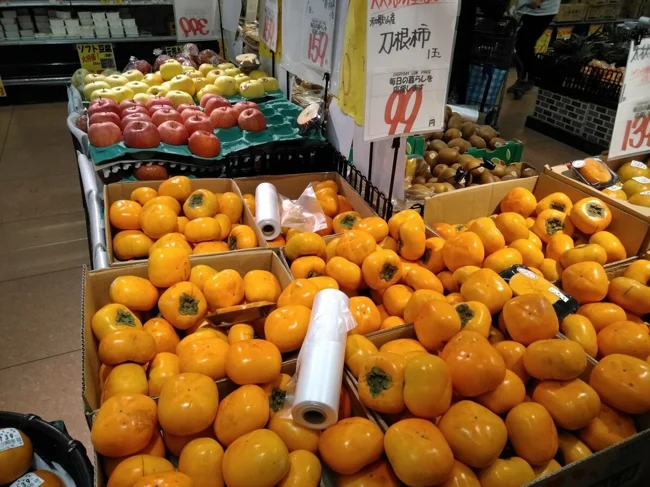

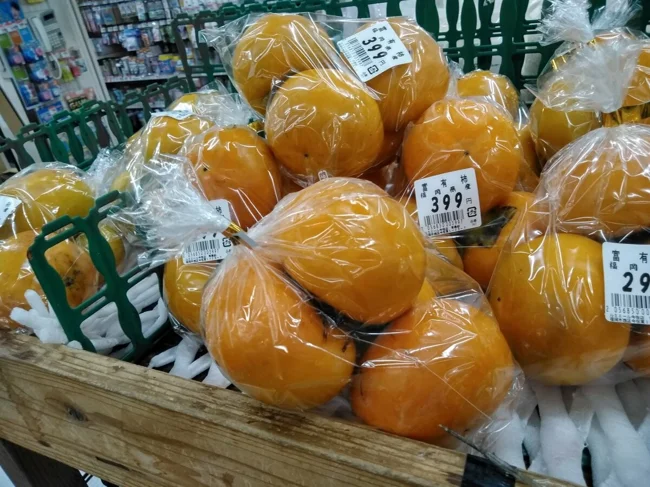
In the shop. Fukuoka
I noticed that in the fall kaki are more popular among them than apples or pears, and the sweetness of these orange fruits is considered the highest among fruits.
For example, the sugar content in strawberries is about 10, in apples - about 12-14, in pears - about 12.
In melons 15-17.
Persimmon is the leader among them - it has an amazing sweetness of 16-18, which is comparable only to melon. The photographs indicate the sugar content of persimmons. 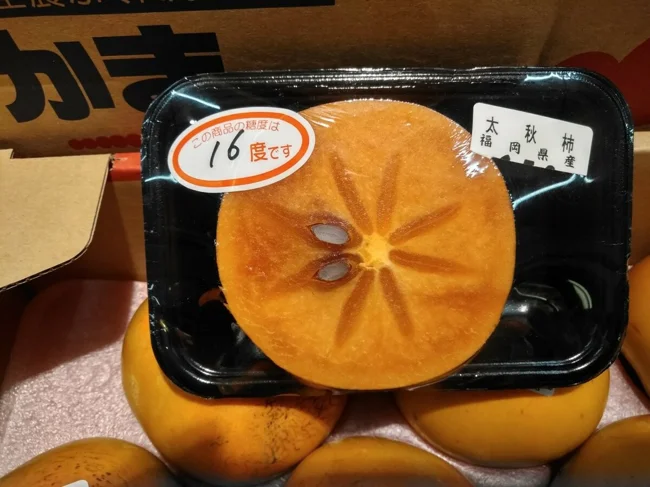
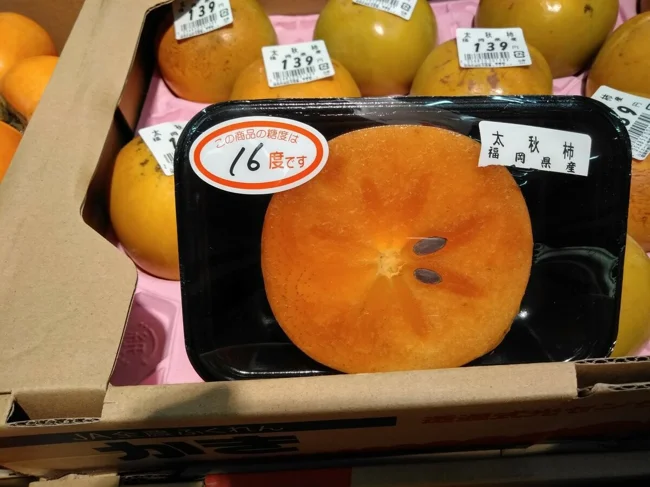
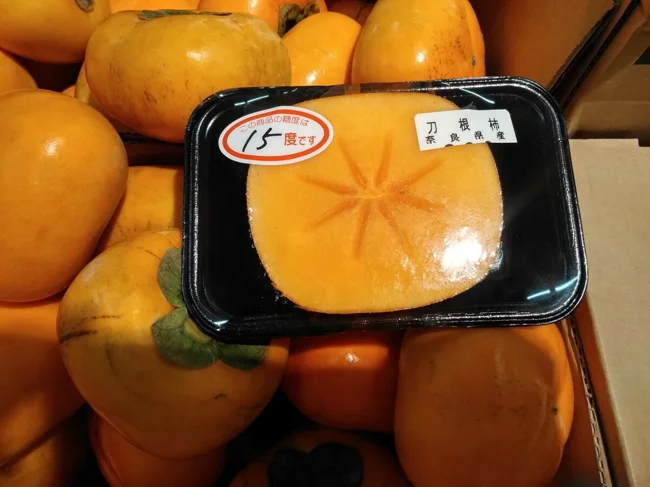
But the sweetest is dried persimmon, its sweetness is densely concentrated and tastes like candy.
All varieties of kaki in Japan, roughly speaking, are divided into “sweet” and “astringent”. The astringent variety is used to make dried persimmons.
It's the season now and all the stores are filled with persimmons! There are so many varieties - both with and without seeds, and different sugar levels! 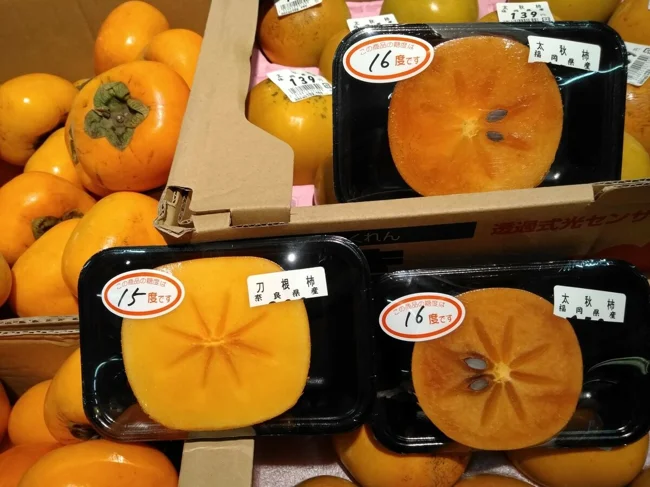
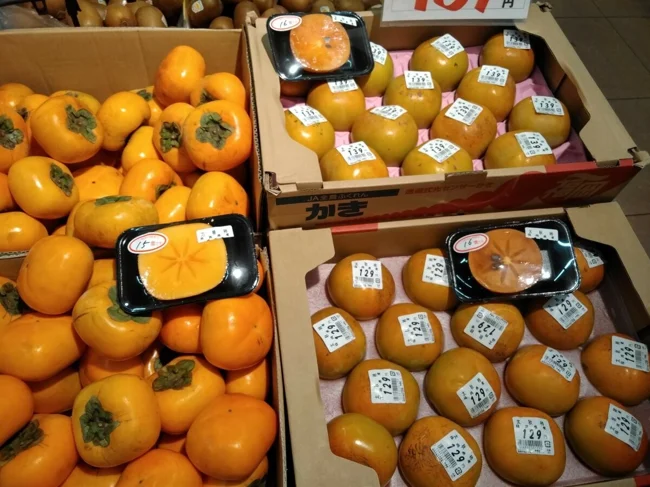
The Japanese give advice on how to choose the right kaki, store it and what to do with overripe fruit, here are some of them:
- If the fruit is heavy, its weight is felt in the hand, and its shape and appearance are beautiful - this is considered a good indicator.
- At room temperature, persimmons ripen quickly and become soft.
- If the fruit is overripe and too soft, it is recommended to freeze it and eat it like sorbet.
What are the benefits of persimmon?
Everyone knows that this is a fruit with high nutritional value, the Japanese say: “The doctor turns blue when the persimmon turns red.” 
Since ancient times, it has been believed that kaki helps with many problems - they are recommended to eat to give elasticity and beauty to the skin, and to save you from a hangover!
Persimmon is rich in vitamin C; in terms of its content, it ranks first among fruits.
And of course, vitamin C helps improve immunity, collagen production and helps against colds.
It contains a lot of β-carotene, and the orange pulp of kaki also contains β-cryptoxanthin (a type of carotenoid), it has a particularly powerful antioxidant power, and is also effective in the prevention of diabetes, osteoporosis and cancer. 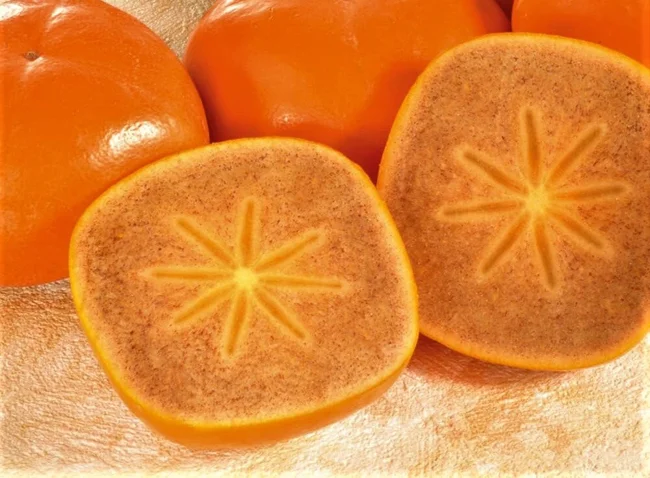
Kaki seedless
Dried hoshigaki persimmons are also useful, although they contain less vitamin C than fresh ones, but have more β-carotene, potassium and dietary fiber.
During the drying process, sugar crystallizes on the surface, as a result of which a white coating appears on the persimmon. 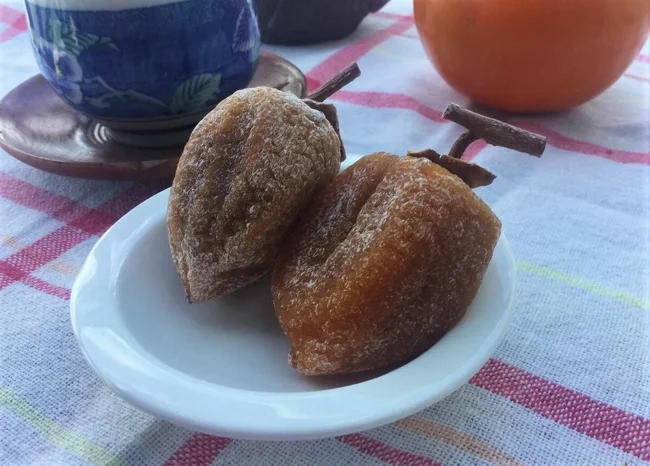
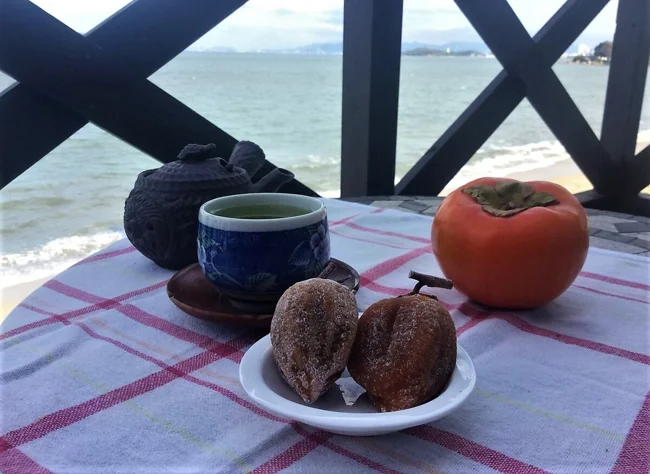
Dried persimmon
It turns out that dried fruit helps with a hangover - after all, it contains tannin - a source of astringency, which breaks down alcohol well. Drinkers claim that this is an excellent remedy.
Dried persimmon in the form of a paste is used as an antiseptic for wounds; dried fruit is recommended for colds and severe coughs.
In addition, dried persimmon contains rare betulinic acid, which is known for its ability to fight cancer and block the growth of cancer cells. 
Well, persimmons are delicious in any form - dried, fresh, or frozen in the form of sherbet!
Do you know that you can also bake it!?
This is a simple recipe that I think you will like.
Persimmons can be easily cooked in the oven or on the grill, or in the toaster.
Baked persimmon
Take the persimmon without peeling it, cut off the top and bake it in the oven for about 10 minutes. 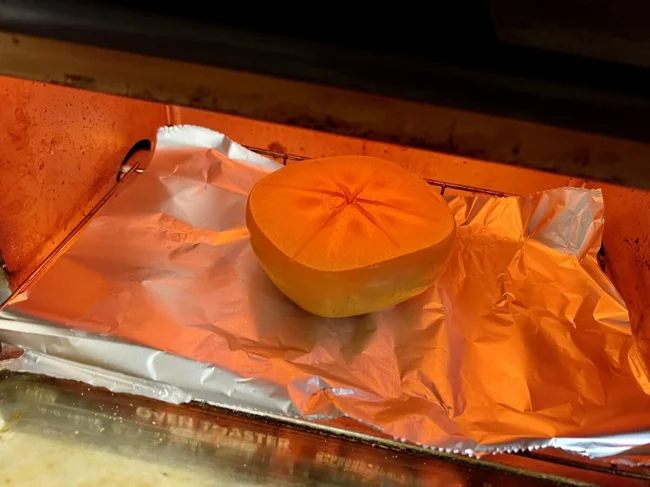
When the persimmons lightly brown, you will feel a sweet, pleasant aroma. 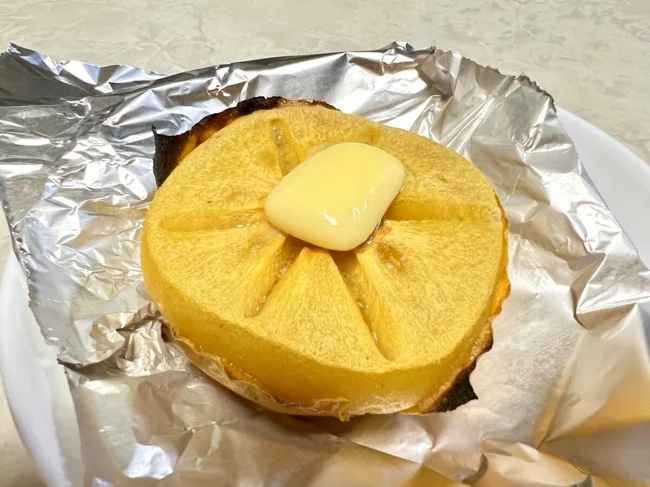
Persimmon with oil
The Japanese recommend putting a piece of butter on top, and as soon as the butter melts slightly, you can eat it. 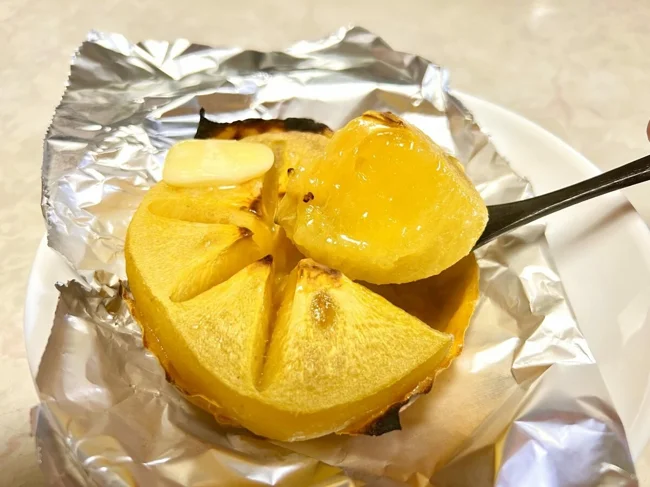
Baked persimmon becomes sweeter, softer and more aromatic, and the combination of butter with its pulp gives it a unique taste.
You can do without it, but the oil here, as the Japanese gourmets say, is a special ingredient that gives a refined taste (topping).
I recommend it to those who like a rich, bright taste.
Probably in the chilly autumn cold, baked hot persimmon will lift your spirits and warm your soul! 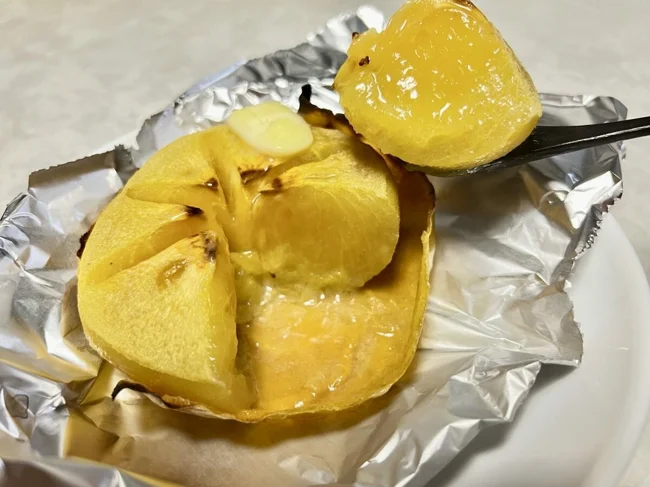
By the way, in Japan they make tea from persimmon leaves, they say that it is very healthy. I just bought one yesterday, it tastes very good.
